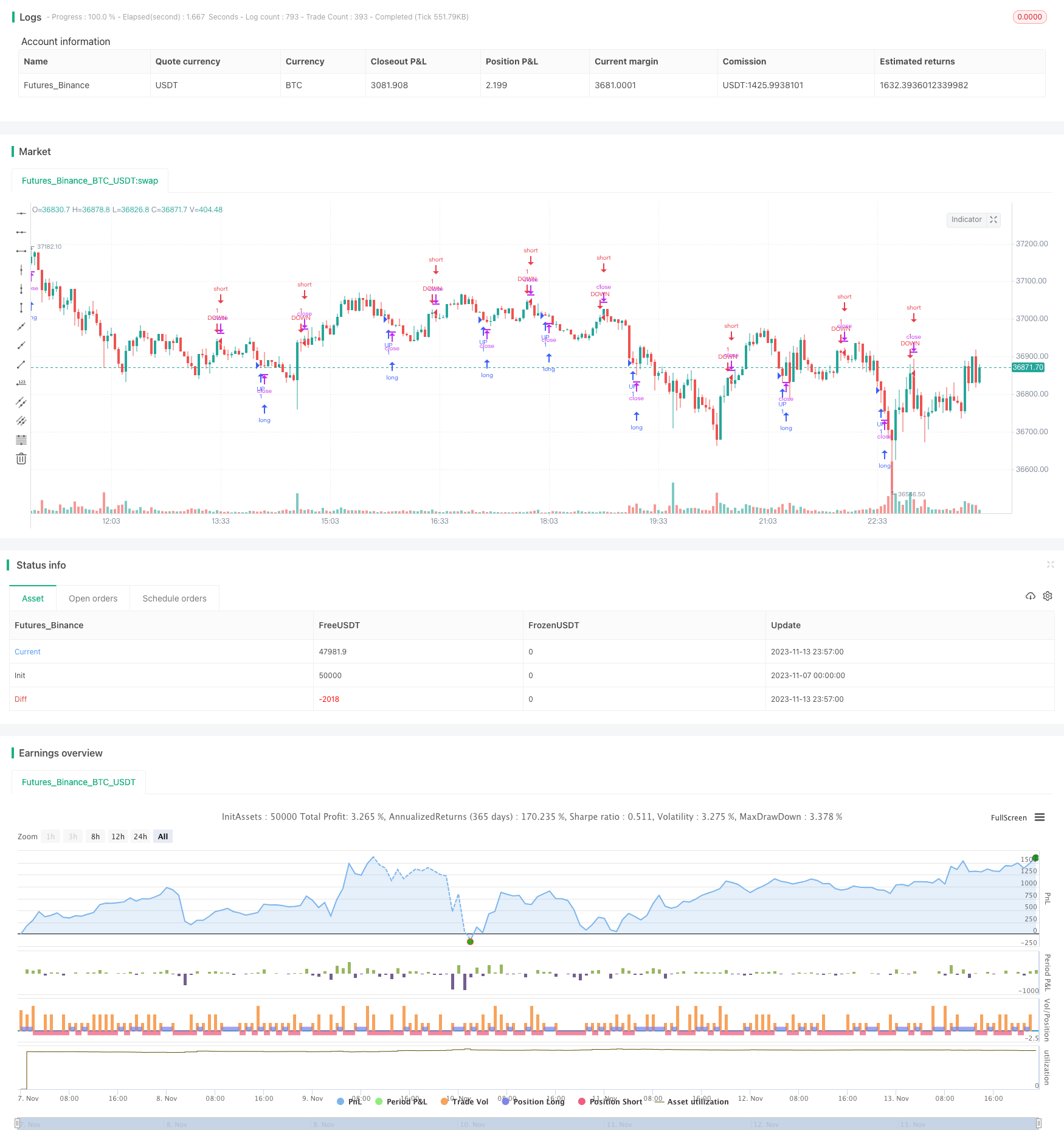
概述
本策略结合双均线和Stoch指标,实现了一个简单有效的二元期权交易策略。该策略同时使用价格的高点EMA、低点EMA和收盘价EMA构建双均线系统,并结合Stoch指标来发出交易信号,以捕捉二元期权中的短期价格波动。
原理
本策略主要基于以下原理:
使用价格的高点EMA和低点EMA构建上轨和下轨,hesesEMA lines作为支撑阻力位。
计算收盘价EMA判断价格相对双均线的位置关系。如果收盘价上穿上轨或下破下轨,说明可能形成趋势反转。
Stoch指标判断超买超卖情况。K值和D值同时低于50表示超卖区,高于50表示超买区。
根据Stoch指标的超买超卖区配合价格突破上下轨的反转信号,可以进行短期买入卖出操作。
具体交易规则如下:
如果收盘价低于下轨且开盘价低于双均线中点,同时Stoch指标显示超卖区(K<50, D<50),做多;
如果收盘价高于上轨且开盘价高于双均线中点,同时Stoch指标显示超买区(K>50, D>50),做空。
优势分析
这套策略结合双均线和Stoch指标,能够有效捕捉二元期权价格的短期趋势反转,具有以下优势:
均线系统过滤震荡,Stoch指标判断超买超卖提高准确率。
交易规则简单清晰,容易实施。
资金利用效率高,一次只持仓一个方向。
回撤可控,避免无谓亏损。
易于优化,可调整均线参数和Stoch输入值。
风险分析
虽然这套策略有一定优势,但也存在以下风险:
双均线产生虚假突破的概率,可能错过较强趋势或反转。
Stoch指标存在滞后,发出信号时趋势可能已发生反转。
无法适应大幅震荡市场,应避开重大事件。
参数设置不当可能导致交易频率过高或信号不足。
无法准确预测二元期权价格走势,存在一定亏损风险。
对应风险可以通过调整参数、优化规则、严格止损来减小。除此之外,需要考虑账户资金规模和止损点的匹配关系,控制单笔损失和最大回撤。
优化方向
这套策略还有进一步优化的潜力,主要方向如下:
增加其他指标过滤,如MACD、RSI等,提高信号准确率。
加入趋势指标判断,避免逆势交易。
优化均线系统参数,找到最佳长度组合。
调整超买超卖判定条件,降低Stoch滞后问题。
设置动态止损或移动止损。
结合相关技术分析工具,找到最佳的入场时机。
测试不同品种套利可行性。
通过以上优化手段,可以进一步提升策略的稳定性和盈利能力。
总结
本策略整合双均线和Stoch指标优势,形成一个简单可靠的二元期权短期交易策略。它标准化了交易规则,有助于风险控制。虽然仍存在一定改进空间,但其思路清晰,易于操作,是一种值得考虑的选择。通过优化参数设置和规则,可望获得更理想的策略效果。
/*backtest
start: 2023-11-07 00:00:00
end: 2023-11-14 00:00:00
period: 3m
basePeriod: 1m
exchanges: [{"eid":"Futures_Binance","currency":"BTC_USDT"}]
*/
//@version=2
strategy("Binary Option EMA/Stoch strategy Corrected", overlay=true)
//stoch
length1 = input(14, minval=1), smoothK = input(1, minval=1), smoothD = input(3, minval=1)
k = sma(stoch(close, high, low, length1), smoothK)
d = sma(k, smoothD)
len = input(4, minval=1, title="Length")
src = input(high, title="Source")
out = ema(src, len)
HIGH = out
len1 = input(4, minval=1, title="Length")
src1 = input(low, title="Source")
out1 = ema(src1, len1)
LOW = out1
HL2 = (HIGH+LOW)/2
len2 = input(21, minval=1, title="Length")
src2 = input(close, title="Source")
out2 = ema(src2, len2)
EMA = out2
x = close < LOW and open < HL2 and close < EMA and d < 50 and k < 50
y = close > HIGH and open > HL2 and close > EMA and d > 50 and k > 50
if (x)
strategy.entry("UP", strategy.long)
if (y)
strategy.entry("DOWN", strategy.short)